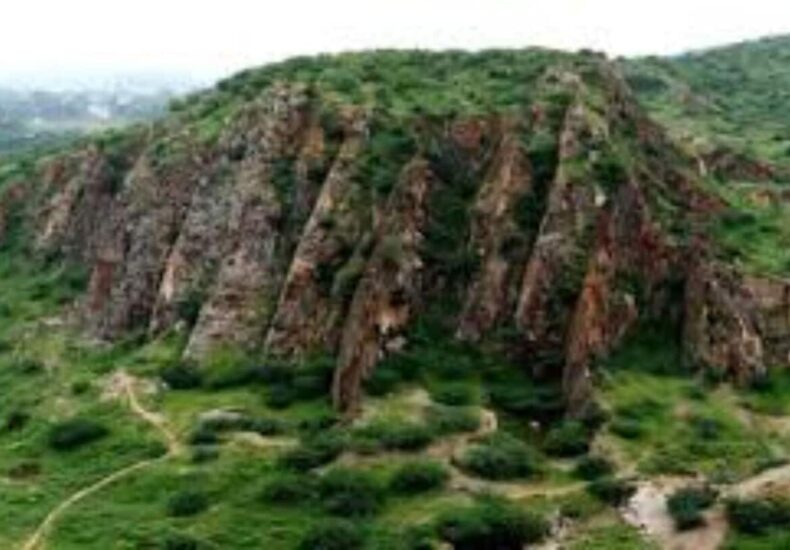
Why most hills in Gurugram, Faridabad could disappear from maps
**Why Most Hills in Gurugram and Faridabad Could Disappear from Maps**
*By Chanshimla Varah | October 10, 2025, 8:32 PM*
—
**The Story**
The Haryana Mines and Geology Department has proposed a new definition for the Aravali Hills. According to a recent proposal sent to the state Environment and Forests Department on October 4, only hills and ranges that belong to the Aravali Supergroup and Delhi Supergroup will be classified as “Aravali Hills and Ranges.” These geological formations must have originated between 2.5 billion and one billion years ago and must rise at least 100 meters above the surrounding land.
—
**Impact of Exclusion**
This proposed definition excludes younger hills from the Neoproterozoic era (approximately 1 billion to 540 million years ago) as well as smaller landforms. Conservationists warn that this change could strip many hills—currently protected by law and serving crucial ecological functions—of their legal safeguards.
MD Sinha, a former Conservator of Forests in South Haryana, told *The Indian Express* that the 100-meter height criterion could effectively remove most of the Gurgaon and Faridabad Aravali hills from official maps. “These areas are mostly scrub hills and grasslands with small forest patches,” he explained.
—
**Government Rationale**
The Mines and Geology Department asserts that the new definition aligns with the Geological Survey of India’s classification. Their aim is to include only ancient, continuous ranges composed of rocks from the Aravali or Delhi Supergroups. The department also cited Rajasthan’s 100-meter height rule as a precedent for this change.
However, Sinha argues that neither the age nor the height of these hills should determine their ecological importance. He cautions that applying such criteria could lead to a significant reduction in forest cover across Haryana.
—
**Ecological Consequences**
The Aravali hills play a crucial role in conserving biodiversity, storing groundwater, trapping heat, and regulating the climate within the Delhi-NCR region. Losing protection for these hills could worsen dust pollution, water shortages, and extreme weather events.
Sinha warns that only a few powerful landowners would benefit from opening up these unprotected hills for real estate development. Furthermore, he fears this move could set a dangerous precedent, prompting other states and even Delhi to adopt similar definitions.
—
**Forest Conservation and the New Definition of Forest**
In August, the Haryana government also introduced a new definition of “forest” for conservation purposes. According to the notification, only land patches measuring at least five hectares, or two hectares with a minimum canopy density of 40%, will be recognized as forests. Linear plantations and orchards outside these designated areas will no longer qualify as forests.
Sinha expressed concern over these changes, stating, “The NCR region already suffers from high dust loads due to dryness. Reducing vegetation will worsen pollution and disrupt local climate regulation. The Aravalis are vital for mitigating these issues.”
—
The proposed redefinition of the Aravali Hills and forests raises significant concerns about future environmental stability and conservation efforts in Haryana’s rapidly urbanizing regions.
https://www.newsbytesapp.com/news/india/why-most-hills-in-gurugram-faridabad-could-disappear-from-maps/story
You may be interested
Sanjay Mishra Buys ₹4.75 Cr Sea-View Flat In Mumbai, But Guess Which Celebs Are His Neighbours?
Mumbai: Popular Bollywood actor Sanjay Mishra has purchased a luxurious...
BMW accident: Delhi court says CCTV footage cannot be shared with accused
Advocate Gagan Bhatnagar, representing Kaur, argued that the case hinged...
Public–Private Partnerships: The Future Of Wildlife Protection?
The challenge of wildlife protection in the 21st century is...
 The New York Times
The New York Times
- What to Know About the Deadly Fire at a Hong Kong Apartment Complex 2025 年 11 月 27 日 Francesca Regalado and Lynsey Chutel
- Heading to the Mideast, Pope Leo May Show ‘Who He Really Is’ 2025 年 11 月 27 日 Motoko Rich
- The Real Meaning of MAHA Is ‘You’re On Your Own’ 2025 年 11 月 27 日 David Wallace-Wells
- Hong Kong Arrests 3 Tied to Construction Company After Deadly Apartment Fire 2025 年 11 月 27 日 Alexandra Stevenson
- Campbell’s Says Executive Accused of Offensive Remarks Has Left the Company 2025 年 11 月 27 日 Emmett Lindner
- What Is Operation Allies Welcome, the Program That Gave Some Afghans Entry to the U.S.? 2025 年 11 月 27 日 Hamed Aleaziz
- Larry Bushart Posted a Charlie Kirk Meme. He Went to Jail for 37 Days. 2025 年 11 月 27 日 Greg Lukianoff
- Leaked Transcript of Witkoff Call Shows U.S. Deference to Russia 2025 年 11 月 27 日 Anton Troianovski
- Dominican Republic Allows U.S. to Use Territory to Fight International Organized Crime 2025 年 11 月 26 日 Maria Abi-Habib and Hogla Enecia Pérez
- Dubrovnik, Known for Its Beauty, Faces a Mound of New Trash 2025 年 11 月 26 日 Adeel Hassan



Leave a Reply